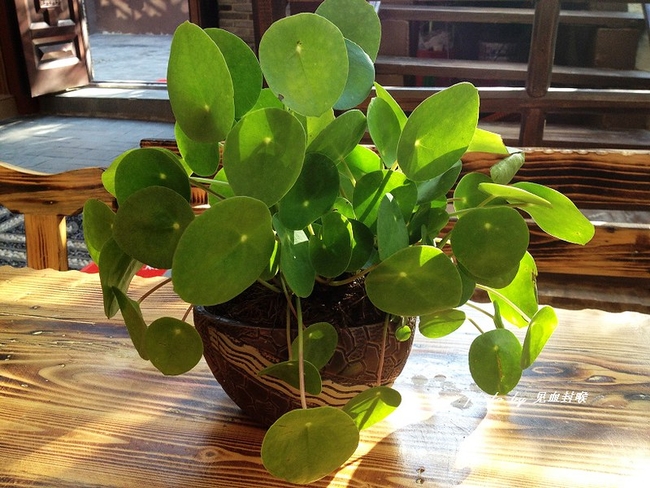- Author: Michelle Krespi
For the past two years I've made my Fall trip to Denmark to visit my new Danish Family! I always wanted to write about a plant that was resoundingly Danish and on this past trip I realized the houseplant I kept seeing over and over was Pilea peperomioides, commonly known as the Chinese Money plant or,UFO plant, Missionary plant and Pancake plant. The fact that it was named a “Chinese” plant threw me off to this plants origin story.
Although the plant was first collected by the Scottish botanist George Forrest both in 1906 and then again in 1910 it was found again by Norwegian missionary Agnar Espegren in Yunnan Province of southern China in both 1906 and again in 1910 as he was fleeing the Province. Espegren brought his cuttings back to Norway, by way of India in 1946. From there this plant spread throughout Scandinavia (Denmark, Sweden, Finland (after the Second World War), and Norway. Initially it was spread unknowingly by amateur gardeners via cuttings but by the late 20th century it became well known by Western botanists. Pilea peperomiodies is part of the nettle family, Urticaceae, of flowering plants. It became widely commercially available in the 2010's and 2020's.[1] It has become a symbol for prosperity and abundance because the Chinese believe it attracts wealth and financial success.[2]
The Chinese Money plant is an erect, evergreen perennial with green, glossy, circular coin-shaped (hence the name “Money plant”) leaves that can grow as large as 4” in diameter on long petioles that attach a little above the center of the leaf. The plant is hairless and can grow up to 12” tall and wide in the wild. Still, the indoor ones that I saw were even larger.[3] The picture to the right shows a mature plant with pups![4] The stem is unbranched and grows erect, ranging in color from greenish to dark brown. The white flowers are inconspicuous. The plant can tolerate temperatures that go as low as 68 degrees Fahrenheit upwards to 100 degrees F. Keep in mind that the plant thrives in warm, humid conditions. If those conditions don't exist in your environment, you can place pebbles in the saucer underneath your plant and fill it with water, making sure the bottom of the pot is not touching the water. The other way is to mist your plant daily.
One of the great qualities of this plant is that they are extremely easy to propagate. There are three effective ways to do this. The first is to propagate through offshoots from the main stem of the mother plant. With a disinfected blade (wipe with alcohol before doing this), cut a baby, (offshoot) from the stem. Put the stem in a bottle of water so the tip is submerged, and when the roots reach 1”-2” long, it is ready to be planted in your soil. It is so easy to propagate this plant it has been called the “pass it on plant.”
Another method to make it even easier is to harvest one of the “pups” or “babies” that grow. This plant has two kinds- offshoot babies and rhizome babies. The latter pops up in the soil near the mother plant. They are connected to the mother by an umbilical-like cord under the soil. Once you see this happening and the pup reaches 2-3” tall it can be removed and planted in a new container. Remember that the larger the plantlet is the better its chances of survival. The best time to do this is during the growing season, (the warmer months). Plant these plants in well-draining soils since they don't tolerate sitting in soggy soil. To encourage your plant to produce pups you can increase your plants access to nutrients by fertilizing it once a month during its growing season. Use a balanced fertilizer, 10-10-10 diluted to half strength once a month.
The last method is to actually cut the top off of your plant, root it in water and replant it.[5] Pilea peperomioides thrives in a soil mixture of three parts Peat mixed with three parts Coconut Coir and two parts Perlite.[6]
Finally, it is important to remove any dead or damaged leaves, which will increase light and ventilation to the plant, helping it to thrive. The Chinese Money plant is low-maintenance and tough, making it an excellent plant for those just beginning to grow a green thumb!
[1] Wikipedia- Pilea Peperomiodies
[2] Website thriveogarden.com May 2, 2024
[3] Wikipedia- Pilea peperomioides
[4] Image uploaded from wikimedia.com, upload.wikimedia.org
[5] Website- thehealthyhouseplant.com
[6] Website- www.wikihow.com




